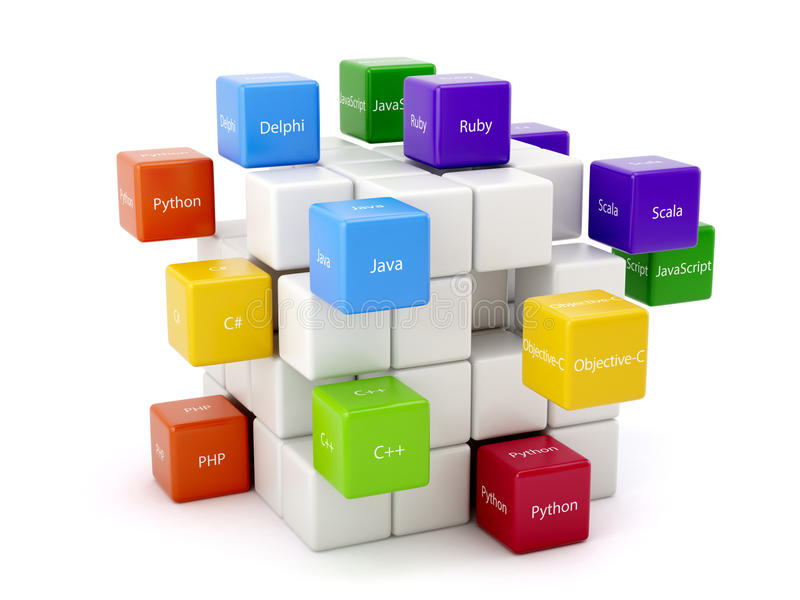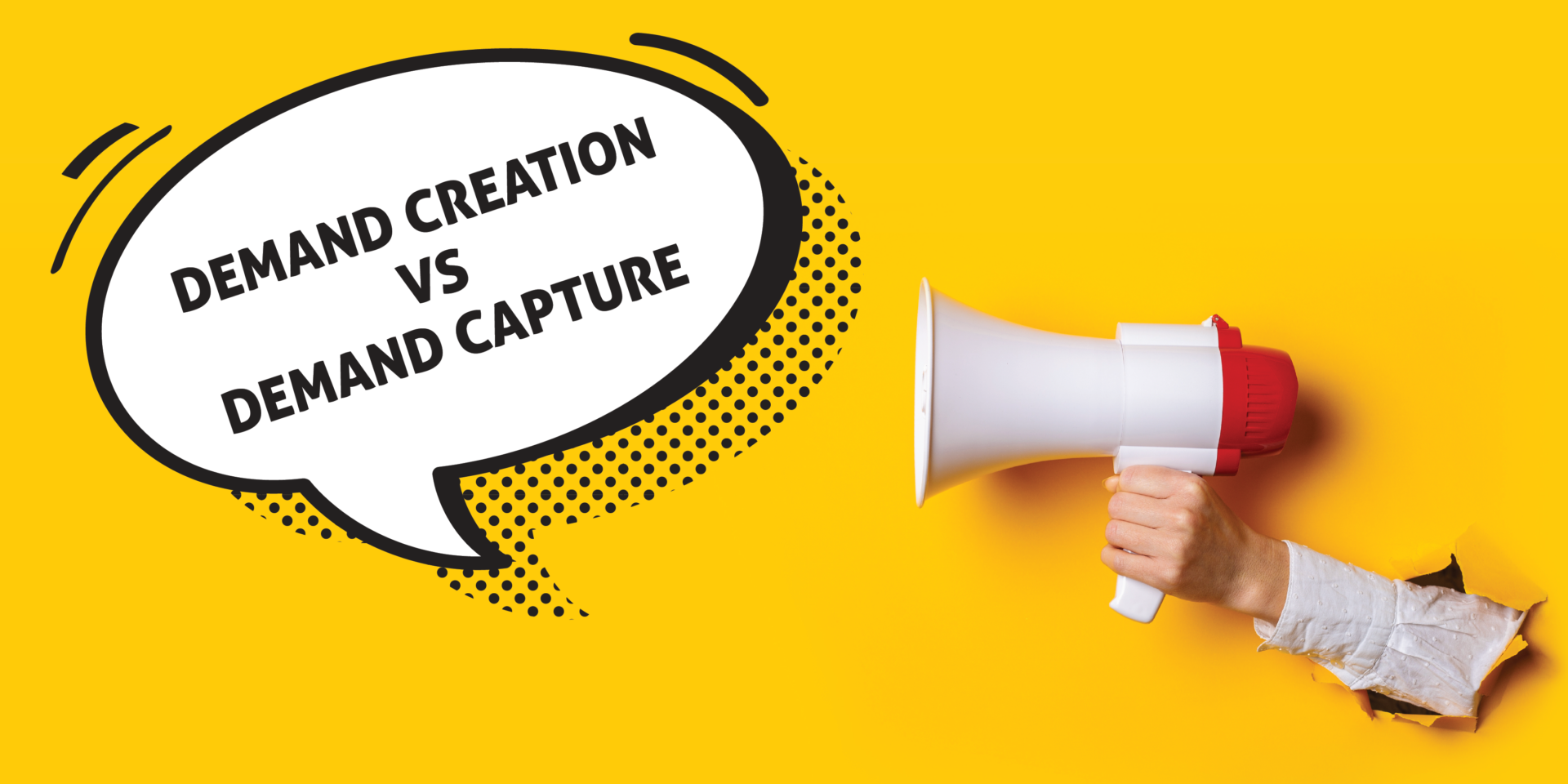Hello!
Demand generation, demand creation, demand capture. If you’re a marketer, especially a SaaS or tech marketer, you’ve probably heard these phrases thrown around all the time. You might even know that they are the pillars of a growth-oriented marketing strategy.
But what exactly are these terms? What does “demand generation” mean? How does demand creation stack up against demand capture? For that matter, how do these terms change what marketing departments might already have been doing to promote their business’ brands, products, and services?
 Well, let’s simplify these topics and answer these questions for you. In this blog, we’ll take a deep dive and compare demand creation vs. demand capture vs. demand generation – as well as compare demand generation with a different, more popular way of doing business (that is, lead generation).
Well, let’s simplify these topics and answer these questions for you. In this blog, we’ll take a deep dive and compare demand creation vs. demand capture vs. demand generation – as well as compare demand generation with a different, more popular way of doing business (that is, lead generation).
By the time we’re finished with this blog, you’ll be a demand generation wizard… or, at least, informed enough to be able to explain why this way of marketing is simply better than how you might have been doing things before.
What Is Demand Generation?
What is demand generation? Demand generation refers to programs that help interest and excite customers and clients about the services or products your brand offers.
It’s quite simple when you break it down like that. Demand generation is, well, literally generating demand for your business. You are reaching people who don’t yet want to become your customer – or who don’t yet know they might want to become your customer – and convincing them otherwise.
 Demand generation is a broad term encompassing many disciplines, but largely speaking, it has two components, demand creation and demand capture.
Demand generation is a broad term encompassing many disciplines, but largely speaking, it has two components, demand creation and demand capture.
- Demand creation refers to the actual act of getting people excited about your products or services, new features and releases, and the like – sparking interest, curiosity, and excitement.
- Demand capture refers to the process by which you then convince these prospective customers to become your customers, and not that of a competitor.
These two phases can be sequential – that is, you create demand in a potential customer, and then capture that same customer’s demand – but aren’t always so neat and tidy.
There will be demand you’re capturing from people whose interest had nothing to do with your demand creation campaign, and some demand you create won’t pay off for months if not longer.
 All together, the demand creation and demand capture process are referred to as demand generation.
All together, the demand creation and demand capture process are referred to as demand generation.
So, there we have it – your simple definitions of demand generation, demand creation, and demand capture.
But this would be a boring blog if we left it at that, wouldn’t it?
Let’s dive a little further into things.
Demand Generation: What Is “Demand” Anyway?
Whether your brand is B2B or B2C, all marketing should start from a business asking itself a single question:
Why would someone buy what we’re selling?
While we have no doubt that there are individuals or even businesses that are only too happy to waste their money on profligate, needless spending, that will never be the majority of your customer base. People won’t buy your products or hire your services for no good reason, just for the fun of it.
We are left, then, with a seemingly straightforward answer:
All demand is ultimately driven from need.
In other words, you sell a solution – but a solution doesn’t exist without a problem for it to solve.
 This need doesn’t have to be massive or existential. It can be as simple as “I want a bigger TV.” If your business is installing art on the walls of other businesses, the need that drives demand for your services is “we want our business to look nicer.”
This need doesn’t have to be massive or existential. It can be as simple as “I want a bigger TV.” If your business is installing art on the walls of other businesses, the need that drives demand for your services is “we want our business to look nicer.”
These needs, even if they seem more superficial and less important than critical needs like “we need to make money to pay our employees,” are no less valid.
So then, it seems simple, right? Someone who has a need that your product or services address can contact you, you can complete the sale, and you’ve got a new customer.
If only marketing were that simple and straightforward, every business would be successful! This simple, straightforward exchange is made more complex via this corollary truth:
Not all needs are immediately obvious to those who have them – nor are the solutions.
We’re not saying that individuals or businesses are stupid or don’t know that there’s a problem. People do tend to be rational actors! But they might not always connect a problem that they know they have to a product or service that can address the problem or its underlying need.
Let’s say that you are a consumer who is worried about germs and illness getting into your home. (Not unreasonable, given the last few years.) “I want to protect myself from illness by eliminating germs” is your need.
 But you might be addressing this by disinfecting surfaces in your house or wearing a mask while out and about. You might not even consider things like UV-C lamps that use ultraviolet light to sterilize the very air around them.
But you might be addressing this by disinfecting surfaces in your house or wearing a mask while out and about. You might not even consider things like UV-C lamps that use ultraviolet light to sterilize the very air around them.
A B2C company that sells UV-C lamps, then, would need to find a way to reach you to obtain you as a customer.
To sum up:
Demand generation = helping a prospective customer become aware that their needs and problems are addressed by services or products your brand offers.
It’s not always that simple. Customers know they have problems, but they might not always know the best way to solve those problems. To paraphrase Henry Ford, if he had asked consumers what they had wanted, they’d have told him “a faster horse.”
 The examples we’ve been using have been B2C related, but make no mistake – demand generation is just as important for B2B brands as well, if not even more so due to the nature of how business decision-makers operate.
The examples we’ve been using have been B2C related, but make no mistake – demand generation is just as important for B2B brands as well, if not even more so due to the nature of how business decision-makers operate.
If your business is regularly having trouble with vandals or thieves, you might be tempted to think the solution is better locks or an onsite security guard – but you might be better served instead by, for instance, advanced sensors and a remote surveillance company.
People don’t buy a drill because they want to buy a drill. They buy a drill because they want to make a hole in something.
Demand Capture vs. Demand Creation: Cause and Effect
“Demand capture” and “demand creation” aren’t different strategies that your business can only choose one of.
 As we’ve discussed already, the difference between demand capture vs. demand creation is that they’re both elements of the demand generation process.
As we’ve discussed already, the difference between demand capture vs. demand creation is that they’re both elements of the demand generation process.
- Demand Creation uses the power of storytelling and persuasion to help buyers discover your products or services and realize that they can address their needs.
- Demand Capture harnesses high-intent marketing strategies to capture and convert buyers who are already in the market.
It is entirely possible that the same prospective customer will go through both stages – that is, you create demand and then capture it – but this shouldn’t inherently be thought of as a two-step process.
Consider some of the classic digital marketing tactics: SEO and paid search marketing. These are still fantastic tools when looking at the right market and right potential customers. But in terms of demand capture vs. demand creation, they’re solidly in the realm of “demand capture.”
Think about it: Whether you sell sporting goods or commercial security, who is seeing your SEM ads or finding your SEO-driven blog posts? It’s the people who are already searching for these things.
They don’t need to learn about “performance running shoes” or “virtual security for businesses,” because they’re already searching for these things.
 To put it another way, consider that good old marketing classic: the sales funnel. Someone searching “commercial business security” on Google and seeing your PPC ads come up might be at the top of the sales funnel, but they’re already in the funnel.
To put it another way, consider that good old marketing classic: the sales funnel. Someone searching “commercial business security” on Google and seeing your PPC ads come up might be at the top of the sales funnel, but they’re already in the funnel.
Someone who is frustrated about dealing with petty theft or vandals after dark isn’t even the funnel in the first place.
With the sales funnel in mind, we can think of demand capture vs. demand creation thusly: Demand capture is the sales funnel, but demand creation is getting everyone into the funnel in the first place.
Demand Creation and the Pointy-Haired Boss
Any marketer knows that “cold calling” has famously terrible response rates, and it’s not surprising why – the unfortunate reality that all sales and marketing teams must grapple with is this: Almost nobody likes to be “sold” to.
And why would they? Whenever you’re on the phone with a sales representative, it’s hard not to find yourself constantly thinking: What’s the catch? How are you trying to obfuscate things to your benefit?
This is even the case with sales and marketing that are completely on the level and honest – which, to be clear, they always should be! Everyone is, by nature, going to focus on the upsides of their product or service rather than any drawbacks.
 So, how can you make the marketing process feel better for the people you’re marketing to?
So, how can you make the marketing process feel better for the people you’re marketing to?
I’m sure many people reading this have experience working in the corporate world – and of those who had, you might have had that boss.
You know, a boss who would feel right at home in a workplace comedy like “Dilbert” – the pointy-haired boss. The sort of boss who it felt impossible to have them agree to any of your initiatives with one exception: If they felt like it was their idea.
Managing this boss, then, became just as much about coming up with good ideas as it did getting the boss to believe it was their idea in the first place.
That’s kind of what we’re going for here – obviously, nobody’s saying that we should be trying to manipulate our prospective customers or treating them like they’re fools. But the same principle is true: People feel more confident in a decision when they feel confident they’ve made it on their own.
This is what separates demand creation – and the overall tactic of demand generation – from older marketing strategies.
With demand creation, you help people start to realize that their problem or need is something that you can solve. Perhaps this is from an ad on YouTube or TikTok, or perhaps it’s in an interview with a podcast creator they love.
 Either way, once you’ve planted the seed of interest in their head, this person can go and start to do their own research. They’ll talk to friends, they’ll look up reviews, they’ll search for terms that you’ve already targeted for SEO or PPC marketing.
Either way, once you’ve planted the seed of interest in their head, this person can go and start to do their own research. They’ll talk to friends, they’ll look up reviews, they’ll search for terms that you’ve already targeted for SEO or PPC marketing.
The important thing is that their interest – their demand – is completely self-motivated and thus doesn’t feel, to them, like they’ve been marketed to.
Demand Capture vs. Demand Generation: Sealing (and Damming) the Deal
As you can see, “demand capture vs. demand generation” might seem like a bit of a silly thing to compare – after all, demand capture is simply the second part of demand generation. It’s like saying “hand vs. finger” or something like that.
However, while it’s true that much of the demand capture pipeline can be represented by traditional marketing concepts like the sales funnel, there is a specific technique that is being used by demand generation marketers to great success.
Let’s close this blog by talking about demand damming.
Like you might dam a stream to divert the water elsewhere, demand damming is just that – interrupting someone else’s flow of demand in order to turn it in your favor.
 This is something that can usually only happen in the demand capture phase of demand generation, because it involves targeting a market that your competitors or related companies are already trying to tap into. In essence, you are putting a block in the sales funnel of a different company, or even a different category altogether.
This is something that can usually only happen in the demand capture phase of demand generation, because it involves targeting a market that your competitors or related companies are already trying to tap into. In essence, you are putting a block in the sales funnel of a different company, or even a different category altogether.
Let’s use an example: Let’s say you offer security and surveillance services relying on advanced sensors and remote monitoring. Your demand capture process is, of course, targeting keywords relevant to your business both for organic and paid marketing – commercial security cameras, commercial security sensors, and the like.
But you can also target keywords relevant to other businesses altogether. You could target keywords related to commercial-grade padlocks or other security applications, and run ads and write blog posts about how your solution is simply a better option for businesses looking to protect themselves.
Heck, you can even run ads (or write blog posts) targeting keywords including competitors’ brand names! You just can’t use their names in your ads, or search engines will penalize you.
That’s how you dam demand and take it for yourself – but be wary, because your competitors can do it right back to you, too.
Also read:
- Without Connecting to A Computer How to Reset and Wipe A Locked iPhone
- How to Maintain and Repair Your Gas Hot Water Heater
- Protecting Privacy in Photos
Conclusions
 It’s estimated that only 1-5% of your potential customers are actively interested in the products or services you provide. The vast majority of people, even those who would be in a great position to benefit from your brand, aren’t even starting to do the research yet.
It’s estimated that only 1-5% of your potential customers are actively interested in the products or services you provide. The vast majority of people, even those who would be in a great position to benefit from your brand, aren’t even starting to do the research yet.
Demand generation fixes that. Demand generation says “You don’t need a faster horse; have you looked into this automobile thing?” It gets this vast 95% of potential buyers starting to do their research. Once you’ve created that demand, it’s yours to capture.
If you run a tech, B2B, or SaaS business, you can’t afford not to use demand generation marketing. But while you could waste time learning how to master demand generation from scratch, why should you — especially when you can work with the experts?
Thank you!
Join us on social media!
See you!






